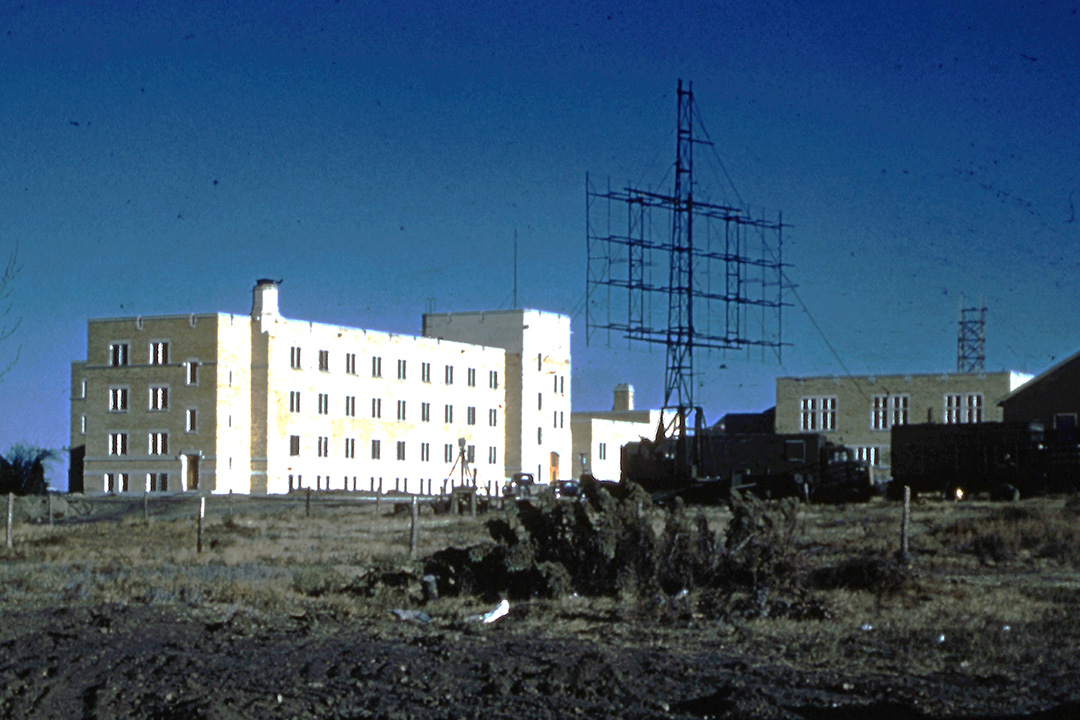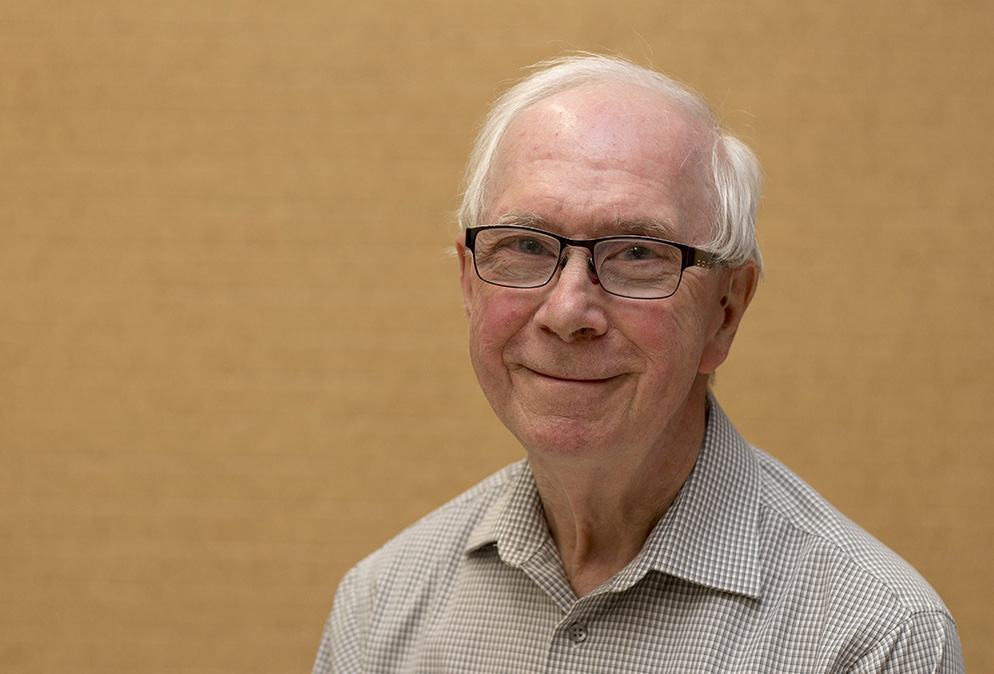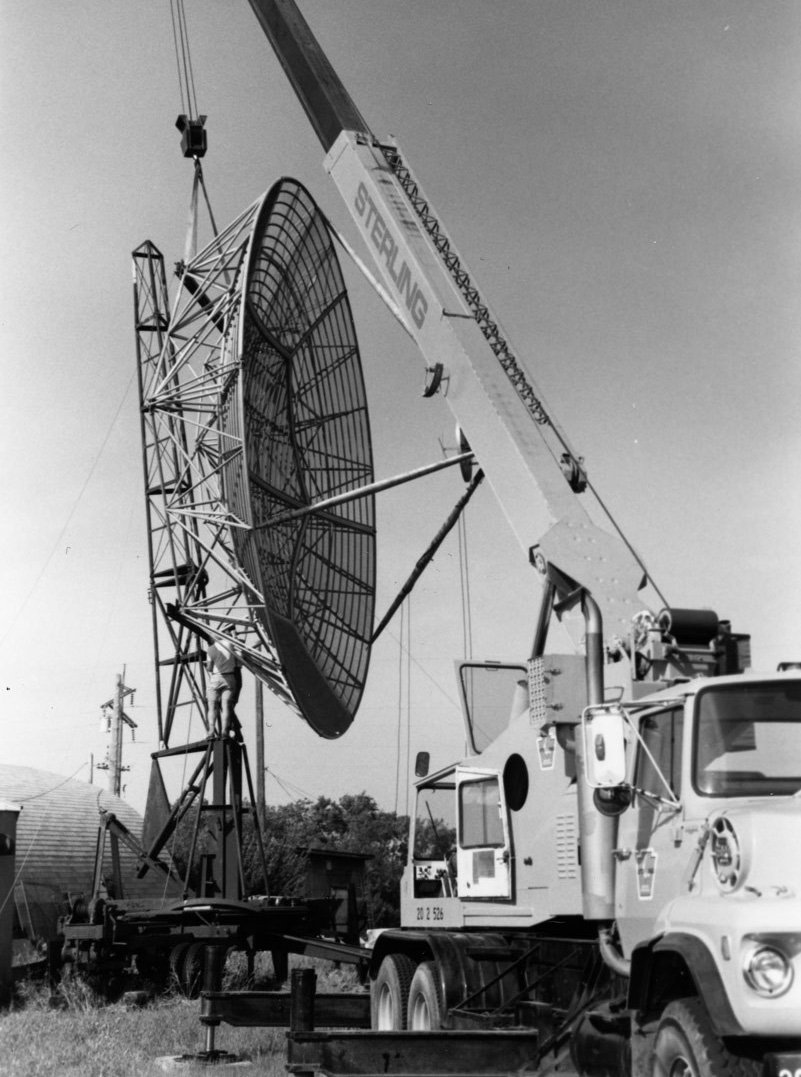
The Pearl Harbor raid radar: Roots of USask research
Eighty-two years ago today, in a moment of time frozen in history, the Japanese surprise attack on Pearl Harbor was detected—but rejected—by radar technology that would later help the University of Saskatchewan (USask) become a national and international leader in space and atmospheric studies.
By James Shewaga“Yesterday, December 7, 1941—a date which will live in infamy—the United States of America was suddenly and deliberately attacked by naval and air forces of the Empire of Japan,” President Franklin D. Rosevelt stated in his address to congress the day after the Japanese attack that brought the U.S. into the Second World War. The incoming Japanese aircraft were discovered by the latest in radar technology at the time—an SCR-270 unit—but were mistaken for a scheduled flight of American bombers heading to Hawaii.
“Those SCR-270 was the best radar at that time and that’s why it was used in Hawaii for the purposes of detecting attacks and that radar did indeed detect the Japanese attack, but it was misinterpreted,” said USask professor emeritus of physics and engineering physics Dr. George Sofko (PhD). “The problem was the Americans were expecting a flight of their own aircraft coming in to Pearl Harbor that day and when the radar operator of the SCR-270 that discovered the Japanese attack phoned over to Pearl Harbor, they said it must be our planes coming in from the U.S. They had an argument about that, but by the time they realized what was happening, they were already being bombed.”

Built by the Westinghouse Electric Corporation, the SCR-270 radar continued to be used throughout the Second World War, with many of the units from Hawaii and other Pacific bases shipped back to the mainland after the war. One of the American SCR-270 units later found a home at USask when former physics department head Dr. Balfour Currie (PhD) arranged to pay to transport it by rail from the Westinghouse manufacturing centre in Baltimore to Saskatoon in 1948, to employ the radar in the university’s study of the aurora borealis—the Northern Lights.
The historic radar unit—cutting edge technology at the time—helped USask researchers conduct some of world’s earliest radar research into the aurora as the university quickly become a leader in atmospheric research, a tradition that continues to this day through work in the Canadian SuperDARN (Super Dual Auroral Radar Network) national research centre led by USask.
“When I first came to the University of Saskatchewan in 1960 to do my PhD, there were several researchers who used that radar at the site just over the railway tracks where Preston Crossing now is,” said Sofko, who later became the original principal investigator of the Canadian component of SuperDARN at USask in 1993. “One use was to measure radiation coming in from the sun. The radiation has to pass through the Earth’s ionosphere, so by measuring the signal, you can tell a lot about what was going on in the ionosphere.”
In addition to academic research, the SCR-270 model also continued to be important for military purposes immediately following the Second World War, particularly with Cold War tensions rising and fears that the Northern Lights could potentially help hide another air attack from radar—this time from the Soviet Union.
“That was a major worry at the time and that was what made the SCR-270 radar so important,” said Sofko.

USask’s early exploration of the aurora, the ionosphere, and solar activity, through radar technology like the SCR-270 helped the university’s Institute of Upper Atmospheric Physics—established in 1956 and later renamed the Institute of Space and Atmospheric Studies—become a world leader in the field to this day. USask currently features the largest solar terrestrial physics institute in the country, with the Saskatoon SuperDARN installation of 20 radar antennas set up in 1993 part of a network that now includes 36 locations in 11 countries around the world.
“Our institute in general has done a lot of work into research into the aurora, and this SuperDARN project is one of the largest and most successful collaborative international scientific projects in the world,” said Sofko, who built his own radar system for his PhD dissertation at USask in the 1960s, designed for his unique studies of the polarization state of signals bouncing back from the Northern Lights.
Amazingly, after officially “retiring” in 2007, Sofko continues his research at USask to this day, at the age of 85 years young. And he looks back fondly at his time spent with some of the other early pioneers of radar research into the aurora, from Currie—the brilliant mind behind the foundation of the USask institute—to Dr. Alex Kavadas (PhD)—the charismatic former fighter with the Greek underground who lost an arm in the Second World War and went on to become a leading research scientist and physics department head at USask.
A professor at USask from 1960-78, Kavadas passed away in 1997 but his contributions to the university continue through the Alex Kavadas Memorial Scholarship for applied research, while his impact on the field of space and atmospheric studies lives on through his former satellite communications company SED Systems in Saskatoon, now a division of Calian Advanced Technologies.

“I came here in 1960 to do a PhD with Alex Kavadas, who went on to found SED Systems—which is now Calian technologies—over at Innovation Place Research Park,” said Sofko. “So he was a very important man in this department and in the university because he was one of the first researchers at the university to spin off a major business in Saskatoon. It was originally called the Space Engineering Division, and now it is Calian technologies. He took with him some of the top technical people that we had here at the university to build that company. And that was one of the biggest corporate spinoffs of this university ever.”
For his part, Sofko’s remarkable career at USask has spanned more than half a century. With the SuperDARN centre now under the direction of his highly regarded former graduate student Dr. Kathryn McWilliams (PhD), Sofko has continued his own research in retirement.
“All these magnetic storms start when the solar wind hits the Earth’s magnetosphere, so I am studying that,” said Sofko.
And what became of that old SCR-270 radar unit that helped USask researchers become world leaders in atmospheric and aurora research? After 40 years on campus, the historic—and now rare—radar unit was returned to the United States after a decades-long global search for one of the original pieces of equipment, in time for a 50th anniversary commemoration of the Pearl Harbor Attack on Dec. 7, 1991. That radar unit that served the U.S. military and USask research for decades, remains on display at the National Electronics Museum in Maryland where it can be seen to this day.
Together, we will undertake the research the world needs. We invite you to join by supporting critical research at USask.

